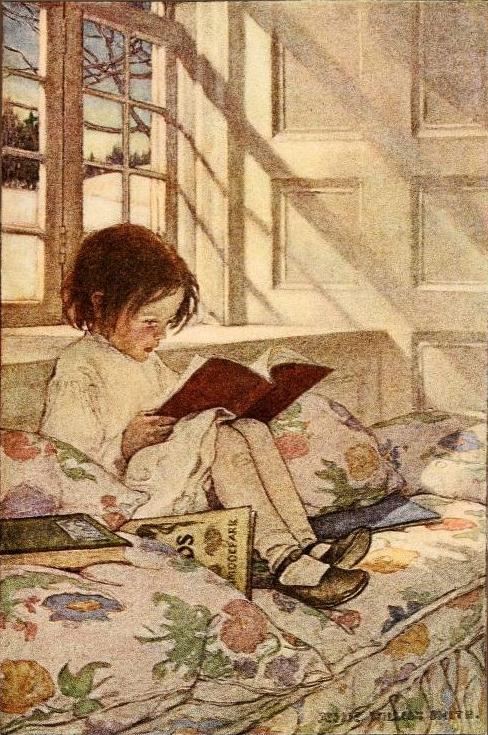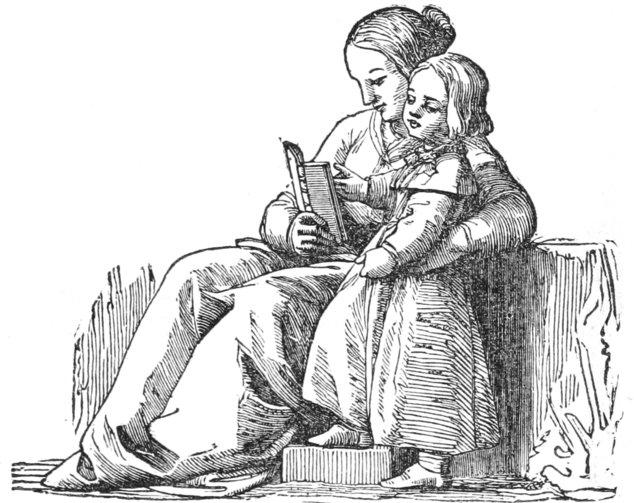How to cultivate a love for reading in children
Springtime, as 2 Samuel 11 famously announces, is “the time when kings go out to do battle.” The less pugilistic among us may instead take up our pruning hooks and plowshares and attack our gardens. We cultivate the soil, carefully place the seeds or saplings in the ground and nurture the young plants along, anticipating the day when we will reap a bounteous harvest.
Helping a child develop a love of reading and of literature is not so different from cultivating a garden. And so, in the spirit of the upcoming planting season, I offer some tips for growing strong readers.
Prepare the soil. Read, yourself, early and often. Have books around the place. A child born into a house where books are both used and cherished is a child who matures in a fertile environment for producing readers. While the value of reading to a baby in utero has not been definitively determined, it cannot hurt! A caveat, however: I read Yeats and Shakespeare aloud repeatedly throughout my first pregnancy; that child has grown up to labor in the fields of professional baseball, rather than in the groves of English literature. There are no guarantees!
A child born into a house where books are both used and cherished is a child who matures in a fertile environment for producing readers.
Plant the seeds. Stock a baby’s starter library with board books, bath books, books that can be gnawed on, drooled over, hurled to the floor, squeezed and loved. Reading for infants is a fully sensory activity: they taste and see, they touch and they hear. Babies respond to books with human faces and vivid pictures, and they love movement, rhyme and music (there is a reason that nursery rhymes have staying power). Plant your baby in your lap, for loving and learning are profoundly linked. Whether a toddler perched on a father’s lap or a first-grader leaning on a mother’s shoulder, a child who is read to by people he or she loves in a cozy and intimate reading environment will associate reading with close relationships, and that is all to the good.

Feed the young plants. From an early age, children absorb the ethos of the books they encounter. Nourish your growing reader with the bright cheery colors of a Lucy Cousins picture book about birds, continue with the lift-the-flap Where’s Spot? series and Rosemary Wells’s redoubtable Max and Ruby stories, and move on to the witty rhymes and sympathetic characters of Bill Peet or the dynamic duo of Henry and his big dog, Mudge. As they pore over the pictures and match them to the words you are reading aloud, your stripling readers will not only be acquiring language, they will also unconsciously be learning lessons of empathy, kindness, resilience and love for the natural world.
Strengthen the plants as they grow: As your reader deepens his or her roots, develops a strong core and begins to blossom, nourish this growth with more sophisticated language, complex narratives and challenging plots. The Little House on the Prairie books, Rick Riordan’s Lightning Thief series that draws on Greek mythology, Anthony Horowitz’s thrillers—these are among the many books you can suggest for your increasingly independent reader. Try to find books marked by writing that is beautiful and strong, with wide-ranging vocabulary and syntax that has some integrity.
Kill the weeds: In 21st-century gardens, the riffraff that is most likely to threaten your developing reader is of an electronic nature. Too much attachment to screens—smartphones, tablets or televisions—can choke a child’s enthusiasm for books. Set firm limits to prevent electronic overgrowth. In my house, depending on the stage of life and the particular child, we had a screen-time to book-time policy of 1:1 or 1:2.
Enjoy the fruits: With proper soil preparation, planting techniques, cultivation and weeding, your garden will produce children who are animated, curious and engaged readers and lovers of literature. Spades at the ready? Let’s get started.
This article also appeared in print, under the headline “The Garden of Learning,” in the Spring Literary Review 2017, issue.










